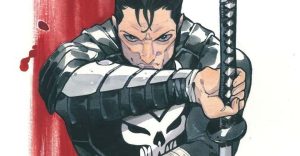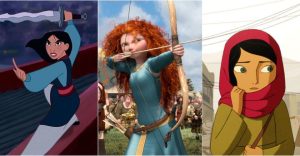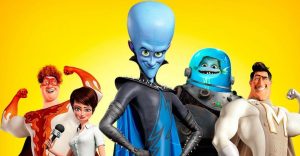How New Moon Became The Weakest Twilight Movie

The Twilight saga did not earn the most impressive critical write-ups in general, but why was 2009’s first sequel New Moon roundly reviled as the worst of the five movies in the franchise? Released in 2008, Thirteen director Catherine Hardwicke’s Twilight was the first in a series of five movies adapted from author Stephenie Meyer’s bestselling teen paranormal romance saga of the same name. Meyer has since expanded the novel series with a companion book titled Midnight Sun.
Although Twilight received less-than-favorable reviews (and was even mocked by its star Robert Pattinson, who found Twilight embarrassing in years to come), the original movie did impressive business at the box office and soon spawned a sequel in the next year’s New Moon. However, Hardwicke did not return to the director’s chair for the second installment of the fantasy franchise, and the sequel received significantly worse critical reception than the (already quite maligned) Twilight.
With the questionable representation of the real-life Quileute tribe, some dicey subtext, and widely inconsistent lore, there was plenty of critics to tear apart in the Twilight franchise. However, despite the evident flaws of both the source material and the movies adapted therefrom, most of the franchise’s subsequent post-New Moon entries received mixed reviews that were better than the second outing’s woeful reception. None were beloved by critics, but 2010’s third outing Eclipse was well-received and only 2009’s first sequel New Moon was roundly slated. So, what was it that made the second film in the Twilight series such a singularly major misfire, and how did later sequels avoid the same fate?
Twilight’s Catherine Hardwicke Didn’t Return

Although the original Twilight had plenty of unintentionally goofy moments, Lords of Dogtown’s Catherine Hardwicke managed to balance the movie’s tone and keep a streak of self-aware humor to lighten proceedings. Meanwhile, the post-grunge visual style of the movie, all cool blues and grey tones, made the milieu of Twilight heightened enough that the sometimes-silly performances had an appropriately campy backdrop. Twilight featured some cringe-worthy moments, but elements like Cam Gigandet’s villain James were suited to the over-the-top environment Hardwicke visualized, and her replacement Chris Weitz failed to recapture this delicate balance. Filling the sequel with warmer autumn tones, Weitz, who had just made the fantasy flop The Golden Compass, overshot and created a palette that looked like the visual equivalent of pumpkin spice. Despite this brighter visual style, though, New Moon’s script skewed too far in the opposite direction, taking itself too self-seriously and becoming unintentionally hilarious as a result.
Too Much Jacob

While all of Twilight’s young cast was mocked by critics when the movies were first released, it has since become clear that stars Kristen Stewart and Robert Pattinson elevated the material with their solid performances. Meyer may have wanted Emily Browning for Bella, but it’s hard to underestimate how much Stewart’s shruggy physicality grounded Bella’s melodramatic behavior and made the teen protagonist believable despite the absurdity surrounding her. However, despite bulking up to an impressive physique to hold onto his role for the sequel, Taylor Lautner was less fortunate in the part of Jacob Black than his young co-stars. While the actor has since found a niche in comedy roles, earning solid reviews in cult series such as Scream Queens and Cuckoo, the deadly serious lead role of Jacob was too big a part for the young star, and he struggled to make the werewolf an engaging figure. Lautner wasn’t helped by the problematic stereotypes that Twilight projects onto the Quileute people, and the character wasn’t one that many fans wanted to spend an entire movie’s runtime getting to know.
Not Enough Edward

In contrast to the heavy lifting done by Jacob, Pattinson’s brief screen time cost New Moon dearly. Pattinson may have dismissed the Twilight movies later in his career, but his tortured Edward was appropriately over-the-top and campy. The actor proved an engaging presence who livened up the otherwise maudlin Bella and balanced Stewart’s deliberate performance. Although the sequence that depicted Bella’s depression in his absence was one of New Moon’s few visual highlights, the amount of screen time devoted to keeping the two stars apart sapped the sequel of its energy and left New Moon feeling atypically lifeless. Twilight has dark, funny, and absurd elements, but one thing the story of vampires fighting werewolves cannot afford to be was dull.
Mike’s Pointless Subplot

Ostensibly included to show how passionate Jacob was about Bella, the subplot that saw side character Mike ask Bella out and fueled Jacob’s jealousy instead sucked up screen time and led to some cringe-worthy attempts at inserting comic relief into the sequel. For much of its runtime, New Moon took itself far too seriously for a teen fantasy, but when Bella and Mike attended a screening of “Face Punch,” the ham-fisted attempt to parody action cinema will likely leave viewers wishing the movie was not trying to be funny. Meanwhile, the fistfight that Mike’s love triangle with Bella led to is inconsequential enough to be unintentionally funny, and Lautner’s tough-guy posturing was a scene that definitely could have been left in the editing suite.
New Moon’s Uneven Tone

Finally, the problem that permeated all of New Moon’s other issues: the movie’s tone was all over the place. Edward was considering suicide, as did Bella in his absence, so why was this the sequel with the most attempts at broad humor like “Face Punch”? With less gore and dramatic werewolves versus vampires action than all three subsequent sequels, why was the overblown, operatic climax of New Moon even more dramatic than the otherwise darker and more intense Eclipse and Breaking Dawn? New Moon failed to win over fans of Twilight and critics alike chiefly because the sequel neither lightened nor darkened the first film’s tone but instead attempted to do both at once.
Ashley Greene’s Alice received few chances to steal the show, while the introduction of the Volturi gave viewers the first taste of Twilight’s big-picture villains. But scenes that saw Bella and Edward heartbroken by their separation were deathly serious (too much so), while scenes that featured her repairing a motorbike with Jacob were goofy in their sunny, rom-com tone. Without a consistent tone to stick with, New Moon soon became the most-hated Twilight movie since it was both too light and too dark, occasionally trying too hard to be funny while also not allowing enough campy, tongue-in-cheek self-awareness into its bleak, slow story.
About The Author


















